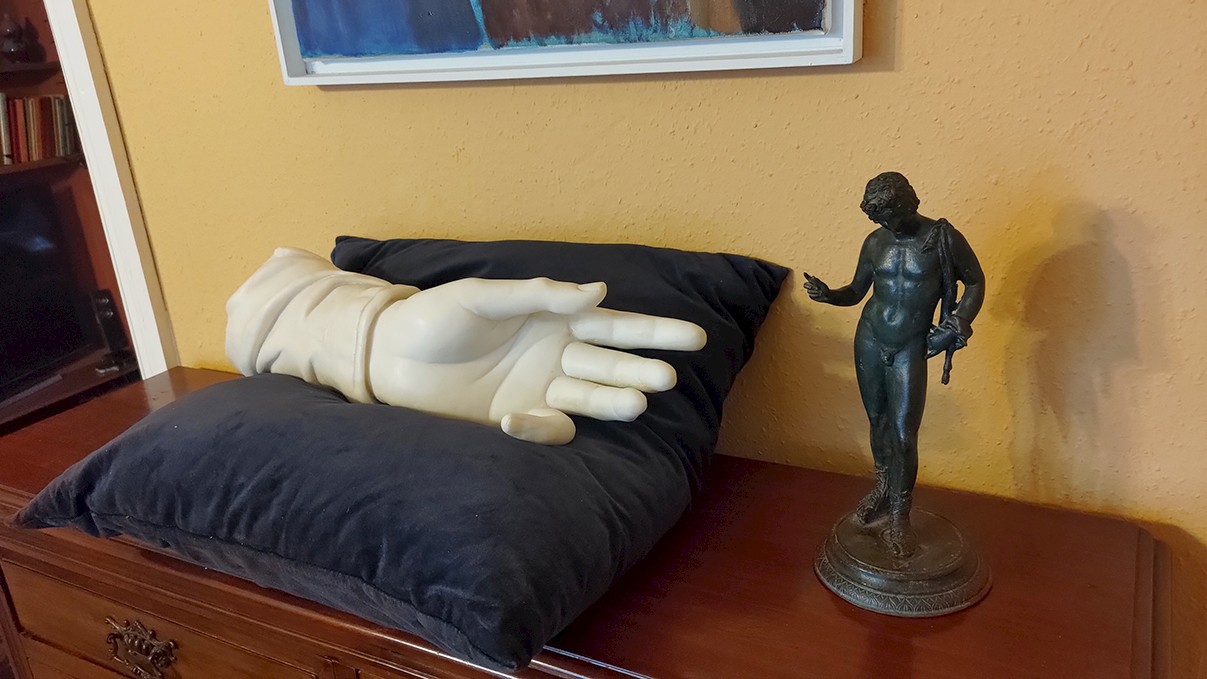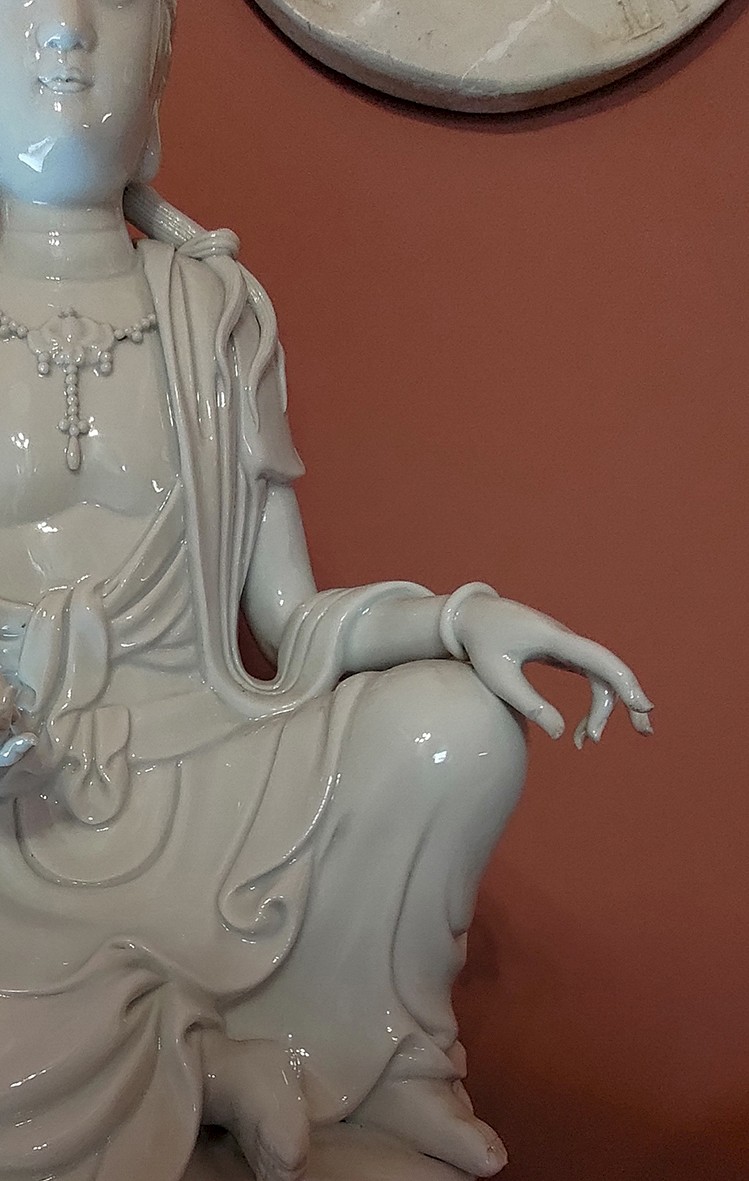A Story by family Thibaut
Matthias Thibaut writes: In the beginning we had the arm on the upright piano, the only place where it was not interfering with our Christmas decorations. It was like an altar. Elevated on its red velvet cushion the arm looked more like a saintly relic than an engaging gesture, distant and dead, oozing a quaint air of irrationality, Catholicism, decay and superstition in our living room.
Only when we moved it on to the book case right next to the door did the arm become a gesture and engaged us and visitors who were astonished by such an unusual ornament in our house.
As for me, each and every time I passed through the door, the arm seemed to point me straight to St. Peter’s in Rome. It made me imagine that monumental shrine to religious doctrine, church power and the most beautiful of languages, art and in particular that corner by the entrance where in other churches postcards are sold but here stands Michelangelo’s "Pietà".
Why this dislocating effect? Probably because the arm is oversized, just enough to transcend the human scale of our modest abode with a grandness that transported me like a magic carpet straight out of my house into an imaginary space.
Looking at Mary’s beautiful, somehow manly hand, is it a gesture at all? Opened in helpless looseness, not quite grasping at something, not quite pointing somewhere, not quite reaching out - in this ambiguity it talks of loss and vulnerability. And in all this emotional upheaval there is a stillness and meekness which asks us to look again.

Other gestures in our house came into focus. The grammar of gestures distinguishes between transitive and intransitive gestures.Transitive gestures point to an object or person, ask for a response, are didactic and intentional (or pose a puzzle like in the case of the little Narcissus or Dionysus bronze pointing into undefined space).
The more decisive a gesture, the less room for interpretation.Think of Uncle Sam‘s finger in the famous war recruitment poster.
Intransitive gestures are self referential, self contained, betraying an emotional state, often so subtly that they cease to be gestures at all – like the hand of our blanc de chine Guanyin which indicates divine peace and self sufficiency.

In the case of Rini ‘s Michelangelo arm the ambiguity is of course resolved through the unpacking and packing of the piece. The gesture is not Mary’s, but our’s. We were given the arm by Mary Evans, after we had a lovely chat in the kitchen, and we gave it away during a slightly more exuberant party in Overbury Street. You are given something, look at it, and you pass it on.That way "A Personal Gesture" seems to contain the whole grammar of gestures – tightly packed in a box.
Christiane Thibaut writes: A light hearted addendum. After the arm had found its place on the bookcase, it also happened to be directly over the drawer where I keep keys, wallets and similar stuff. When placing or retrieving things, sometimes I couldn’t resist putting keys, credit cards or even earrings in the open hand which to me seemed to be made to hold, protect and keep something. Doing this moved the otherwise strange looking, broken off arm in its tombstonelike whiteness into a more intimate, practical space. But of course I didn’t do this without some qualms about degrading such a sublime object





